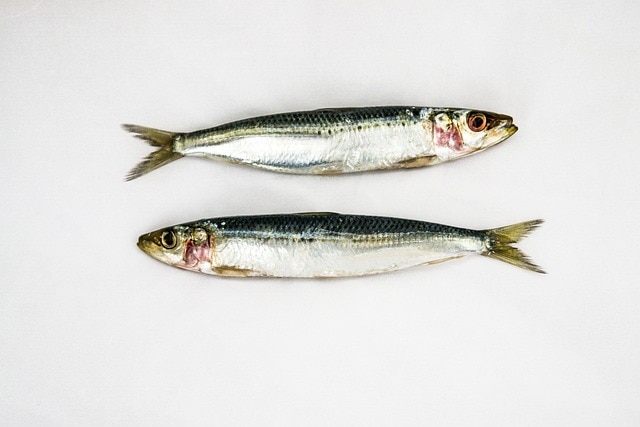Overview of Whiting Fish and Its Low Price
Whiting fish refers to several species of small, white fish that are members of the cod family. They are abundant in oceans around the world, including off the coasts of Europe, North America, South America, Australia, New Zealand, and South Africa.
Despite their global availability, whiting tends to be very inexpensive compared to other types of seafood. There are several reasons for the low price of whiting fish, which we’ll explore in this article.
In a nutshell, the low market value of whiting is largely due to high supply and low demand. Whiting is easy to catch in large quantities but does not have a strong consumer following, even in countries where it is fished.
While tasty, it has less meat than higher-value fish. Processing whiting into fillets is also relatively easy and low-cost compared to many species. The combination of these factors keeps prices for fresh and frozen whiting consistently low.
Whiting Fish Basics
Whiting fish are small, common fish found in coastal waters around the world. They belong to the cod family and their scientific name is Merlangius merlangus.
Some key facts about whiting fish:
– They typically grow to 12-20 inches in length and 1-3 pounds in weight. Larger fish over 2 pounds are often called “jumbo whitings.”
– Whiting has an elongated body shape with two dorsal fins. They are silver-gray with a white belly.
– They are abundant in the North Atlantic and North Pacific oceans. In the U.S., popular fishing areas include New England, the Mid-Atlantic, California, and the Pacific Northwest.
– Whiting live near the seafloor and feed on small crustaceans, worms, and mollusks. They are frequently caught by bottom trawling fishing methods.
– Related fish species include Pacific whiting (also called hake) and New Zealand whiting. However, true Atlantic whiting is the main species fished commercially.
– Whiting meat is white, lean, and mild-flavored. It has a delicate texture and high moisture content that makes it suitable for a variety of cooking methods.
– It is often sold fresh, frozen, smoked, or dried and salted. Fresh whiting is suited for frying, baking, broiling, and poaching.
So, whiting are small, bottom-dwelling fish found in cool coastal regions worldwide. Their abundance and adaptability make them a commercially viable fish species.
Whiting Abundance
Whiting is an abundant and prolific fish species found in coastal waters around the world. In the U.S., Atlantic whiting ranges from the Gulf of Maine to Cape Hatteras, while Pacific whiting is found from the Gulf of Alaska to Baja California.
Both species travel in large schools numbering in the tens of thousands or even millions of fish.
This high abundance makes whiting easy to catch in large quantities. Commercial trawlers can harvest millions of pounds of whiting in a single trip using large, mid-water trawls.
Even small-scale fishermen find whiting easy to catch using basic hooks and line fishing methods. Their abundance close to shore and willingness to bite on bait contributes to the high catch rates.
The prolific spawning rates of whiting also ensure the population remains high. Each female whiting can lay up to 2 million eggs per season.
With so many eggs hatching into new fish annually, whiting can sustain substantial fishing pressure while remaining plentiful.
Their high reproduction rate is key to keeping this fish affordable and readily available to consumers.
Low Consumer Demand
Whiting is not considered a premium fish by many consumers and thus has less demand compared to species like cod, salmon, and tuna. There are several reasons for the lower consumer interest:
– Whiting has a mild, delicate flavor that some find less appetizing than fuller-flavored fish. The taste is not bold enough for many.
– It is a small, bony fish, so the yield of fillets is low, especially compared to larger fish like cod. This makes it less versatile and convenient for cooking.
– Whiting is not a well-known fish. It has much lower brand recognition and awareness among consumers compared to more popular seafood options.
– Fresh whiting has a very short shelf life and can be difficult to find outside of regions where it is caught. The limited availability reduces consumer exposure.
– There are not many classic or well-known dishes that feature whiting as the star ingredient. It is rarely highlighted on restaurant menus or in recipes.
The lack of consumer demand and preference for whiting keeps market prices low since fish with higher desirability can command higher premiums.
Changing consumer perceptions of whiting as a high-quality, flavorful fish would take considerable marketing efforts. For now, its mild taste and small fillets continue to limit its appeal to a wider consumer base.
Difficult to Export
A key reason Whiting fish is so inexpensive is that it’s difficult to export and sell outside of local markets. Whiting is extremely perishable, with a short shelf life of just a few days.
This makes long-distance transport to other domestic or international markets challenging and costly.
Whiting meat also has a soft texture that can degrade during freezing and thawing. The fish doesn’t preserve well when frozen, making it hard to export frozen fillets or other products.
The high moisture content causes the flesh to break down when frozen.
These export challenges mean most whiting is sold close to where it’s caught. The limited geographic market and short shelf life prevent wider distribution and higher prices.
Whiting is mostly sold fresh in local ports, fish markets, and restaurants near fishing areas. Expanding the customer base for whiting beyond local buyers would require major advances in preservation and transportation.
Low Meat Yield
The low retail cost of whiting can be attributed to its low yield of edible meat compared to many other fish species.
When whiting is processed, over 50% of the fish is inedible parts like bones, head, fins, and organs. This compares poorly to lean fish like cod that yield over 70% edible meat.
The high percentage of inedible parts in whiting makes it less profitable for fishermen and fish processors.
More whiting has to be caught and processed to produce the same amount of fillets as higher-yield fish. This extra labor and processing cost gets passed along to consumers in the form of lower prices for whiting fillets.
Whiting’s small size also contributes to its low meat yield. An average whiting weighs only 1-2 pounds.
After removing the head, bones, skin, and fins, that leaves just a few ounces of usable fillets per fish. Larger fish like salmon and halibut can produce over 10 pounds of fillets from one fish.
So fishermen have to catch many more whiting to get the same meat output.
The bony structure and small fillets of whiting make it more difficult, time-consuming, and expensive to process compared to larger, meatier fish.
This also puts downward pressure on the retail cost of whiting. Consumers benefit from lower prices, but fishermen and processors earn less profit from whiting compared to high-yield fish like cod, haddock, and salmon.
Easy to Process
Whiting is one of the easiest fish to process compared to many other commercially caught species.
Its simple structure, small size, and lack of bony structures make it relatively quick and inexpensive to fillet and prepare. This contributes to the low market price for whiting.
Some of the factors that make Whiting easy to process include:
– Small size: Whiting usually weighs 1-2 pounds at maturity. This makes them easy to handle compared to larger fish like tuna or cod which can weigh dozens of pounds each. The small size requires less time and work to portion into fillets.
– Few bones: Unlike many fish, whiting does not have a large rib cage or an intricate bone structure. They have a simple boneless tail and a relatively small head. This reduces the labor needed to remove bones and produces higher meat yields.
– Mild flavor – Whiting has a delicate, mild flavor compared to stronger-flavored fish. This makes them versatile to prepare using various seasonings or breadings without overpowering flavors. It also reduces processing complexity.
– Lean flesh: Whiting is low in fat, with firm white flesh. The leanness makes them quick to cut into portions without working around fatty deposits. The firm texture also holds up well to freezing or other processing methods.
– Lack of scales: Whiting does not have large, tough scales like some other fish species. This makes them faster to descale and prepare.
The simplicity and efficiency of preparing whiting keep processing costs low compared to other fish. This enables the low market prices that make whiting accessible and affordable to consumers.
The ease of handling whiting from catch to plate is a major factor enabling its popularity as an inexpensive fish.
Competition with Other Fish
Whiting competes with more popular and valuable fish like cod, haddock, and pollock. These mild white fish are often the same size as whiting, and have a similar taste and texture, but are more sought after by consumers.
Restaurants and grocery stores can fetch higher prices for cod, haddock, and pollock fillets compared to whiting.
Since commercial fishing boats catch a mix of these species together, they prioritize landing as much cod, haddock, and pollock as possible due to the higher market value. This leaves whiting as more of an incidental bycatch fish.
Additionally, major global groundfish producers like Norway and Iceland export large quantities of cod and haddock to markets around the world.
But there is relatively little international trade in whiting compared to these more high-value whitefish species. The lack of foreign demand for whiting helps keep its price low domestically.
While whiting offers an affordable alternative for consumers, its abundance and lower market value make it far cheaper than premium whitefish like cod that it competes against in the marketplace. The availability of more profitable substitute fish is a key factor keeping whiting prices down.
Fishing Regulations
There are relatively few regulations on catching Whiting fish compared to other species. Whiting is not considered overfished, so catch limits are less restrictive.
Commercial fishing boats in the United States are given generous quotas for whiting that they do not always fill.
The lack of strict catch limits and abundance of fish helps keep market prices low. If whiting were harder to catch or more regulated, the limited supply would drive up costs.
But with plenty of whiting available and no shortage expected, prices remain stable and affordable for consumers.
The lack of catch limits and abundance of whiting contributes to it being one of the cheapest fish available in the United States.
While environmental factors could change in the future, the current fishing regulations and biomass levels support an inexpensive supply chain from ocean to plate.
As long as whiting remains plentiful in the sea and easy to harvest, it will likely retain its title as one of the most affordable fish.
Conclusion
In summary, whiting fish is inexpensive for a variety of reasons. Whiting is abundant, with large schools found along the Atlantic and Gulf coasts.
However, whiting has relatively low consumer demand in the US, even though it is delicious because it is lesser known than more popular fish like cod.
Whiting is also difficult to export internationally due to its soft flesh. The meat yield from whiting is low compared to its overall weight.
However, Whiting is easy and inexpensive to catch and process. It also faces stiff competition from other inexpensive white fish like tilapia and swai.
While some fisheries have quotas and limits, whiting is not generally overfished. All these factors combine to keep prices for fresh and frozen whiting consistently low and affordable.
Though it lacks the prestige of lobster or snapper, whiting provides excellent value for seafood lovers on a budget.

